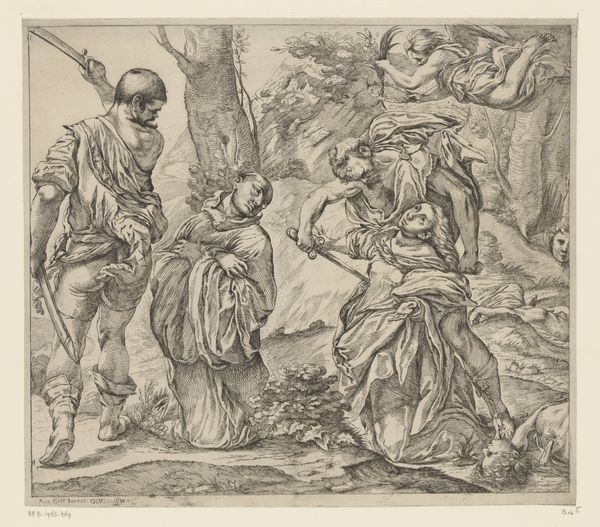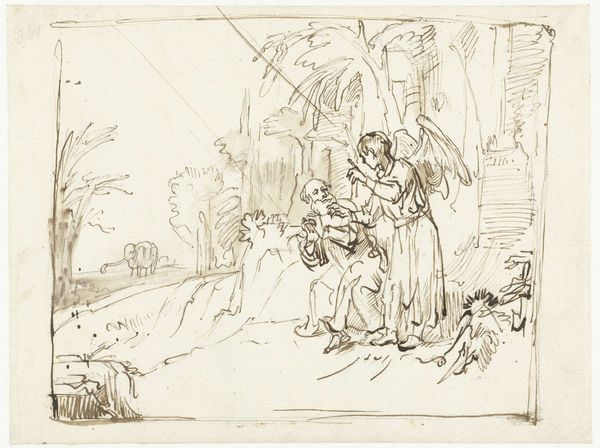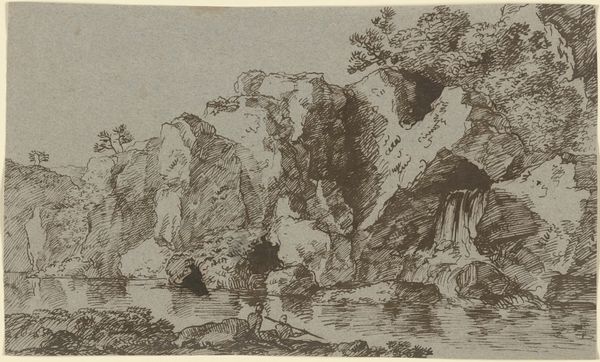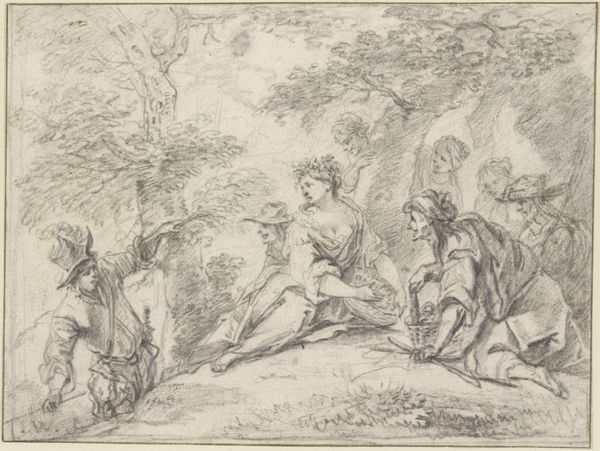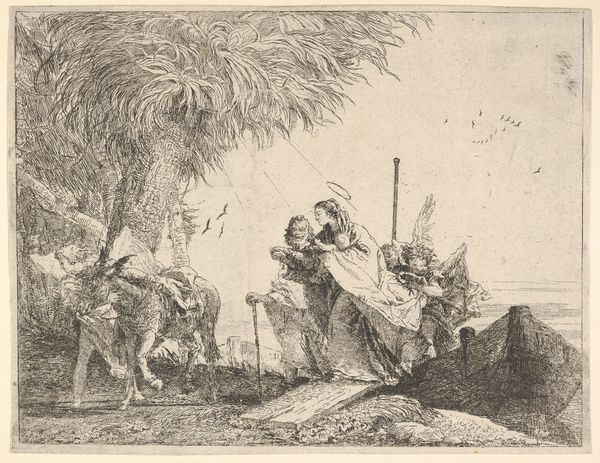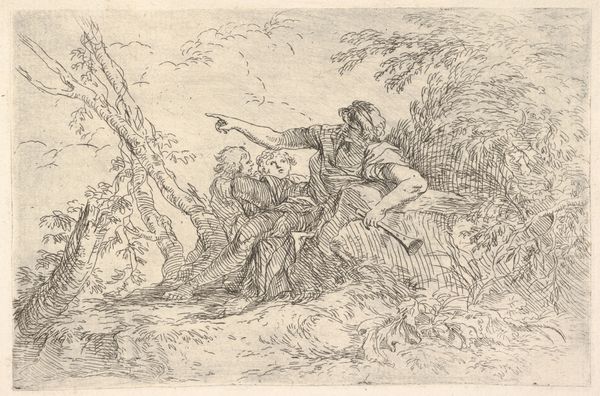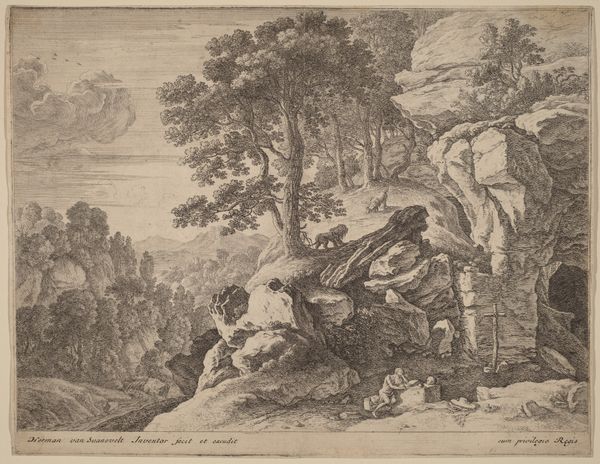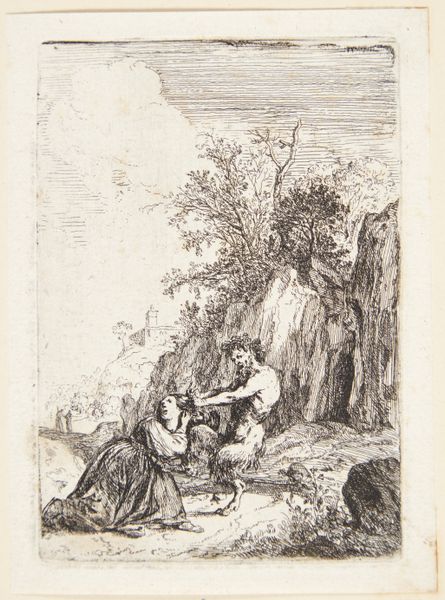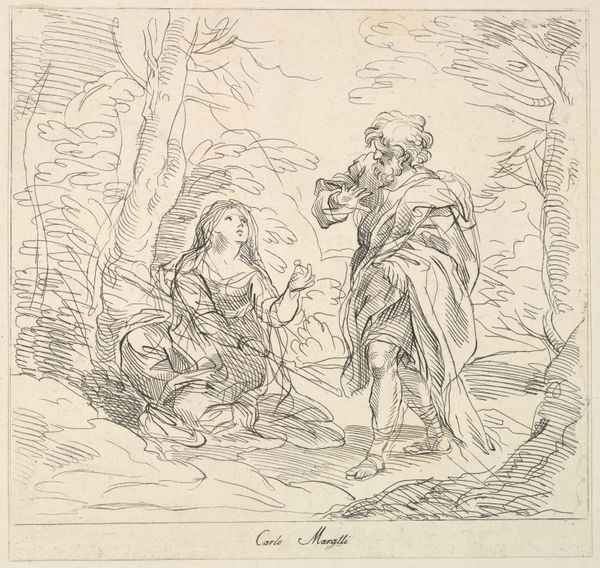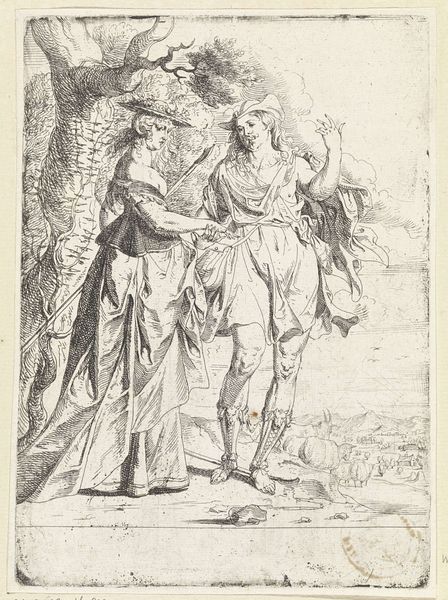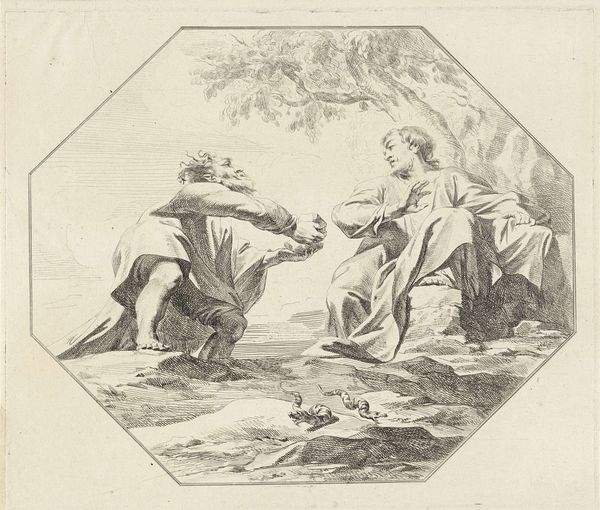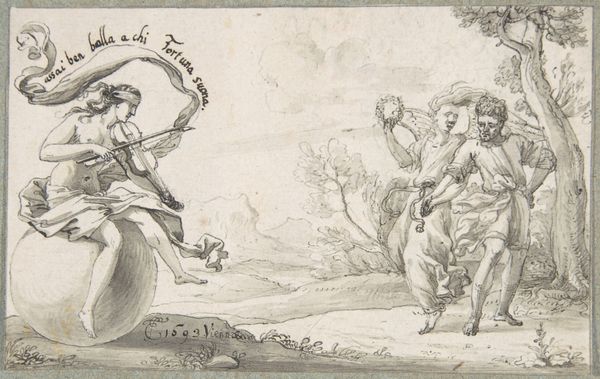
drawing, print, ink, engraving
#
drawing
#
narrative-art
# print
#
landscape
#
figuration
#
ink
#
italian-renaissance
#
engraving
Copyright: National Gallery of Art: CC0 1.0
Bartolomeo Pinelli created this etching of Dante's Inferno in the early 19th century. It shows Dante and Virgil confronted by three beasts, allegorical figures representing different sins. Pinelli was a key figure in Rome's artistic scene at the time. He tapped into a growing sense of Italian national identity, drawing on popular subjects and local traditions. His work reflected a romantic vision of the past but was also inflected with contemporary social and political concerns. This image creates meaning through its visual codes, referencing classical art and literature. Dante's "Divine Comedy" was becoming a touchstone for Italian identity. Pinelli's choice of this subject matter, as well as his printmaking technique, speaks to the rise of a middle-class audience for art, one eager for accessible and affordable images that celebrated their cultural heritage. Understanding Pinelli's world requires delving into the art market of early 19th-century Italy, the rise of nationalism, and the rediscovery of Dante as a national poet. By looking at these contexts, we can better understand the meaning and significance of his art.
Comments
No comments
Be the first to comment and join the conversation on the ultimate creative platform.
